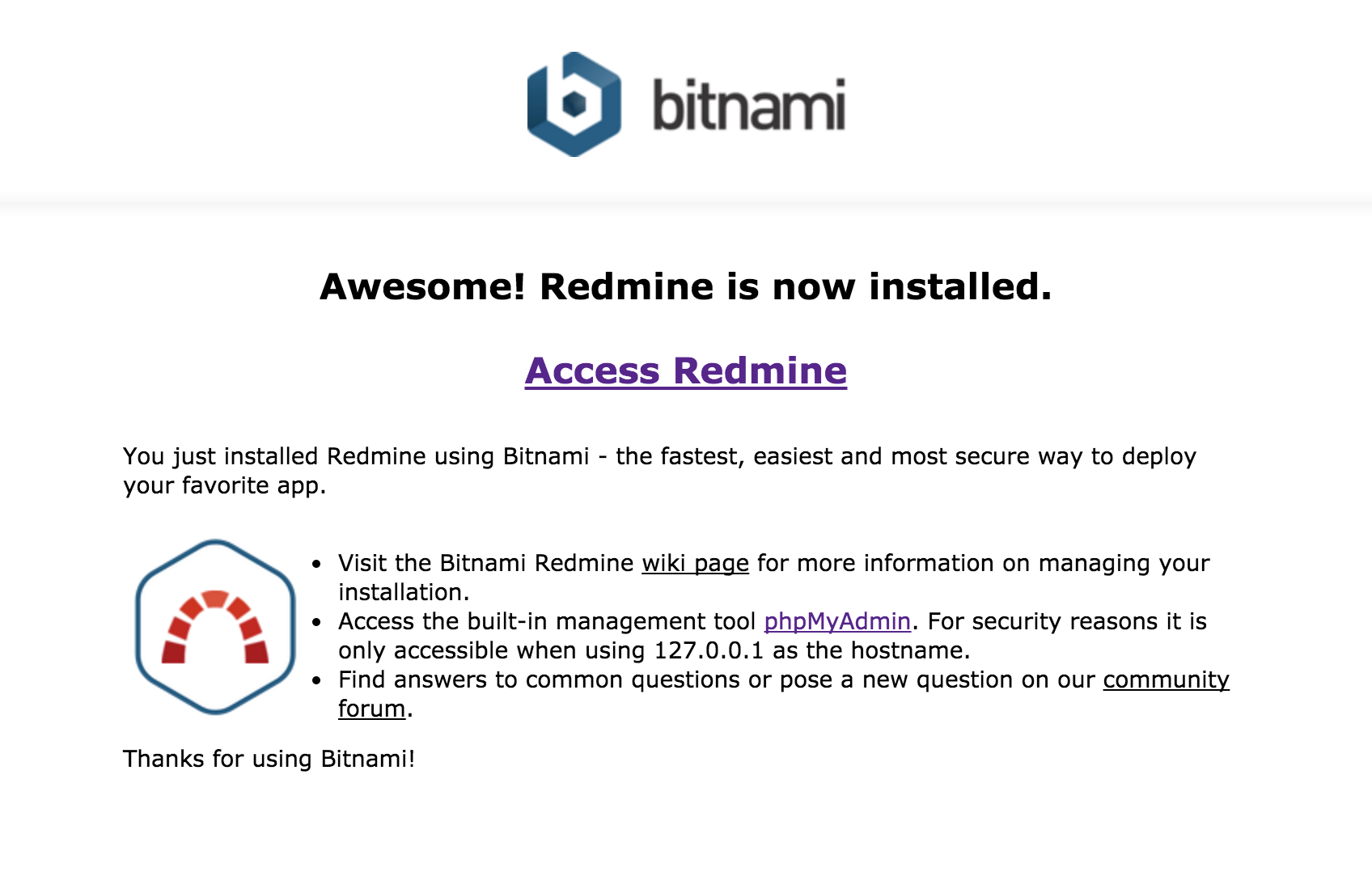
- #Set up ssh on bitnami redmine how to
- #Set up ssh on bitnami redmine manual
- #Set up ssh on bitnami redmine windows
before I was running a stack but installed on the centOS server as a root user. I migrated from a local server in my office so that it could be in the cloud. Right now I’m investigating what can we do with bash and hopefully this would result in having real Magento module for deployments that would somehow work in combination with bash… but … hard to say… every project is different and what is worst environments are very different so it is hard to standardize anything….luckily scripting some basic deployment is quite easy… it is much more important to have nicely organized repository.Hello all, I installed redmine 3.XXX a couple months back on a centOS 6 VPS. When it comes to more serious deployments, we have tried in combination with phing, but then again for most of the projects I have found it little bit overhead so I can say that we are still trying to find some optimal solution.

#Set up ssh on bitnami redmine manual
How we deploy it is another story… we have tried many ways from capistrano, phing and ant to manual ssh & git pull + whatever needs to be done… In my personal opinion any way that results in scripting just to connect automatically to servers via ssh and then doing magic is kind of ok if all you want to do is to move the code (of course, you need to plan your gitignore carefully). Maybe I’m wrong though… In any case, I’m just investigating possibilities 🙂 Regarding Capistrano… well… I don’t know… personally, I don’t like dependencies it requires compared to bash and in general last time we used it (I wasn’t the one who wrote recipes) every now or then, there were some bugs… and in general, all I do is actually executing set of commands that I would usually execute manually in the shell (if there wasn’t any script)… I don’t know… i just don’t look on that as “deployment”… for me, it is just automatic execution of few shell commands…can it be better than doing it in most native way possible? I don’t know, Capistrano (for ruby people), ant (for Java people), Phing (For PHP people) just seems like a tool to overcome lack of confidence in using any of unix shells…. I would need to separate commands with “ ” as an alternative, so I believe that in case code meant to be executed remotely increases for few more lines (and it will, as soon as I try to do something more advanced), readability would be nightmare imho…
#Set up ssh on bitnami redmine how to
I hope you got idea how to start with coding your own deploy script using bash…įirst script is running locally and second one is actually containing the code meant to be executed remotely. This is just result of me learning bash, it works for such basic stuff, but it is far from done, especially if you are using some CI tools etc. It also deletes cache, which is useless if you keep cache in memcache. What will happen next is that it will just execute “git pull” on the server that you are deploying to, so keep your. deploy.sh -u SSH_USERNAME_FOR_THE_SERVER_YOU_ARE_DEPLOYING_TO -h HOSTNAME -b BRANCH_NAME -d APSOLUTE_PATH_ON_REMOTE_HOST Go to your project directory and use it like this: Now, create another file at the same space called remote_exec.sh and put this inside: #!/bin/bash

Ssh $USERNAME $HOSTNAME 'bash -s' < remote_exec.
#Set up ssh on bitnami redmine windows
It could work for Windows as well if you are using git bash or something like that, but I haven’t tested it.Ĭreate file deploy.sh in your project root directory and put this inside: #!/bin/bash

It can be used in order to deploy any git branch to some place where you did cloned your origin repository as long as you have ssh access to such a places 🙂 You can play with it and maybe you can come up with something more useful and robust. This is just very basic semi-automated code transfer and nothing else. It is not meant to be used in production environments unless you are aware what it does exactly. It is completely irrelevant where do you host your code as long as you actually do have git repository 🙂 This article shows proof of concept for git deployment.


 0 kommentar(er)
0 kommentar(er)
